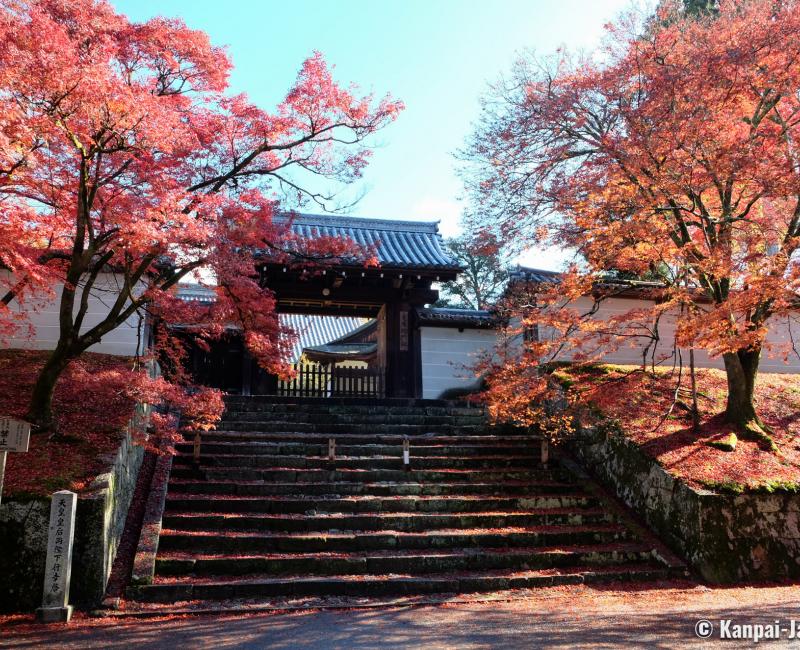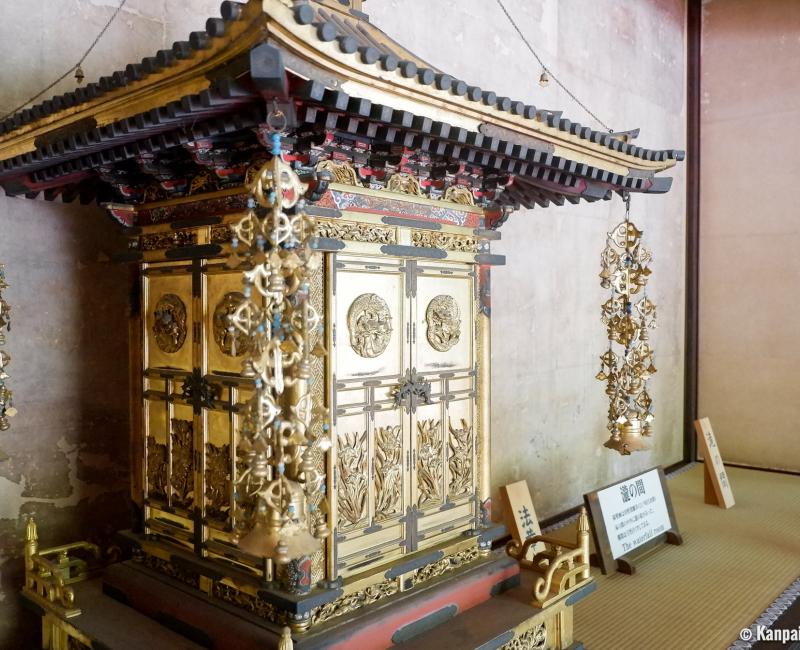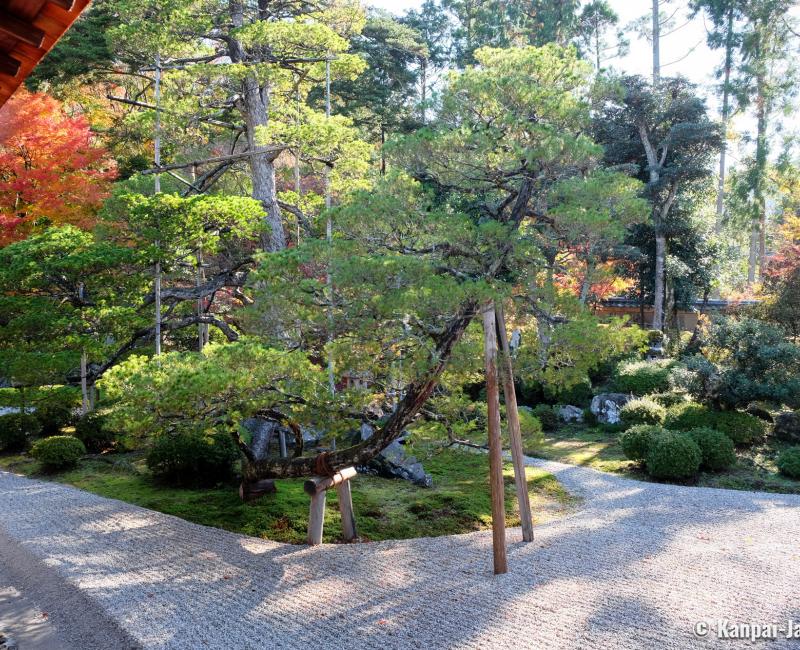Manshu-in
The Discreet Monzeki Temple in the North-east of Kyoto
Manshu-in is a Buddhist temple of the Tendai branch, located in Sakyo ward in the north-east of Kyoto, in the vicinity of Shugaku-in Imperial Villa. On the side of sightseeing tours, this 17th century Japanese art capsule is a quiet interlude embellished by glowing autumn sceneries.
Manshu-in is a Buddhist temple dedicated to Amida Nyorai and was founded in the 8th century by monk Saicho (767 - 822), who received the posthumous name of Dengyo Daishi and was the initiator of Tendai Buddhism in Japan. Originally located on Mount Hiei and called Tobibo, it was renamed Manshu-in in the early 12th century.
The temple was moved to its present days’ location in 1656, on the decision of prince Ryosho who was also its head-priest. Influenced by the renovations undertaken in Katsura Imperial Villa, he chose to build the temple in the same shoin-zukuri style that characterized the warriors’ residences and the Zen Buddhism abbots’ housing at the time. Manshu-in was thus nicknamed the "little Katsura Rikyu."

A temple away from the sightseeing tours
The temple is quite far from the city center: a 50-minute bus ride from Kyoto station and a 20 minutes’ walk in narrow streets are necessary to reach its location. However, the magic is operating well before arriving at the temple: the area is quiet, barely known by tourists and the road is rather pleasant.
Before Manshu-in, visitors are welcomed by an alley lined with splendid maple trees. On the left, a small Shinto shrine seems abandoned but adds to the charm of the place. Most of the tour is set inside the monastery’s vast pavilions, that cover a surface about three to four times bigger than the garden. Don’t forget to take off your shoes upon entering!
A few visitors, mostly Japanese, gather around an exhibition of pictures of the many celebrities who have already walked on the temple’s tatamis:
- Emperor Emeritus Akihito and his wife, of course,
- Pope John Paul II,
- Queen Elizabeth II, and,
- Soccer player David Beckham.

A collection of important Important Cultural Properties
They probably have been attracted by the important heritage sheltered here. About ten rooms, all primarily delineated by fusuma sliding doors, are open to wandering. There is no specific circuit, so one can leisurely enjoy the details of the ornamentation and architecture.
Two rooms, characteristic of the shoin-zukuri style, are listed as Important Cultural Properties: Daishoin, the largest and Koshoin, the smallest, that both open on the garden.
The different parts of the building are ornamented with wonderful decorative paintings in the style of the Kano School of painting, and some were even painted by the school founder Kano Morinobu (or Tan’yu, 1602 - 1674). Among the most beautiful paintings are:
- The "Tiger’s room" (Tora no ma) in the large hall Daigenkan,
- The "Waterfall room" (Taki no ma) in Daishoin,
- The "Snow landscape room" (Ju yuki no ma) also in Daishoin,
- The "Mount Fuji room" (Fuji 🗻 no ma) in Koshoin.
Overall, nearly 1,200 artworks related to arts and literature, such as a remarkable Fudo-myoo painting are kept in Manshu-in.

An extraordinary Zen garden
The garden is unveiled at the end of the visit and offers a wonderful Zen view of maple trees and karesansui dry gardens. It can be admired from various angles for a better immersion in the magic of the grounds, designated a "place of scenic beauty of Japan," with Mount Hiei in the background. A wonderful Japanese white pine is growing on a green inlet symbolizing a crane and is said to be 400 years old. The setting of the place is such, however, that expressing its beauty through pictures is difficult.
Manshu-in might not be a must-see, but it offers to curiosity-driven visitors or those looking for quietness a true haven of peace. Autumn is the most beautiful time to discover the temple, and it can be easily combined with Saginomori-jinja, another nearby koyo 🍁 spot. It is however enjoyable all year long, and can also complement the visit of Shugaku-in Imperial Villa, built at the same period, and located a little bit further north.

